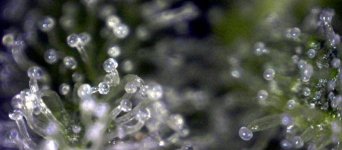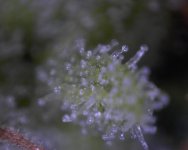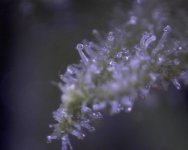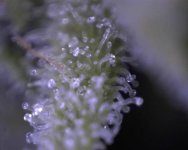Penetration is great I have never had any issues with a lack of it but then again I have not flowered with any mediocre low powered LED lights like many who have had poor results have used. Reflective materials on the sides of the canopy obviously are of great benefit just like with HID so they bud pretty much all the way down and benefit from all the reflected light going back into the garden. Those plants are like 3 to 3.5 feet tall in drip hydro using coir & hydroton mix. CO2 at around 1200 ppm.
I feed the whole time the lights are on and flowered those with Advanced Nutrients Connoisseur 2 part at around 900 to 1200 ppm with the added basic beneficial's from their line-up. They also got a couple scoops of the Fox Farm 3 part bloom boosters during flowering at the appropriate times added to the AN mix, the last 10 days flushed with RO water. Yield fully trimmed up & dried was right at a pound give or take plus I clipped a branch or two early. My girlfriend also ate a big bud at around 6 weeks flowering because she said it smelled like candy lmao. So considering the added small T5's in the corners the yield was still well over a gram per watt total with 8 weeks flowering time. Works for me.
I feed the whole time the lights are on and flowered those with Advanced Nutrients Connoisseur 2 part at around 900 to 1200 ppm with the added basic beneficial's from their line-up. They also got a couple scoops of the Fox Farm 3 part bloom boosters during flowering at the appropriate times added to the AN mix, the last 10 days flushed with RO water. Yield fully trimmed up & dried was right at a pound give or take plus I clipped a branch or two early. My girlfriend also ate a big bud at around 6 weeks flowering because she said it smelled like candy lmao. So considering the added small T5's in the corners the yield was still well over a gram per watt total with 8 weeks flowering time. Works for me.











